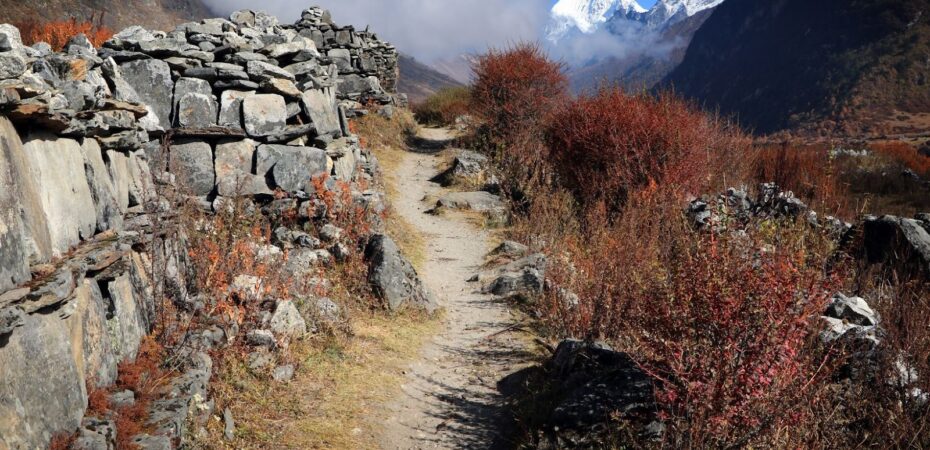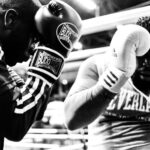Earlier this year, it was announced there would be no more independent trekking in Nepal.
What that means is whereas in the past, adventurers could either hire their own guide or porter or go totally alone, this is no longer possible.
Sighting trekkers’ safety as the reason for this change means that from now on, trekkers have to sign up and travel with a registered trekking agency.
The Langtang Valley is an 8-day trek: two days on the road and six days actually hiking in the mountains. So how much does it actually cost to do the Langtang Valley Trek with a trekking agency?
Breakdown of Costs
First of all, you need to get to Nepal, and depending on your departure point, that is most likely going to be your biggest expense! That aside, how much do you need to do this trek?
Prices may vary a little depending on the season, yes, it is cheaper in the ‘off season’ such as the monsoon (July and August), but unless you love hiking in the rain, you will probably want to avoid that time of year anyway.
Let’s take a look at what Magical Nepal, a licensed trekking and travel agent in Nepal owned and run by young, passionate outdoor adventurers, says.
Their price for the 8-day trek to Langtang Valley ranges from between USD522 to USD795[j1] .
What exactly do you get for this? Let’s break it down further.
Accommodation: 7 nights in a teahouse. That is hiking speak for a trekking guest house. But the teahouse sums it up perfectly. If you have never been trekking in Nepal, you can somehow imagine the basic accommodation afforded in a ‘teahouse’!
Most sleeping rooms have two single beds and do not have a private bathroom. Bathrooms are shared with other sleeping rooms. Hot water is not always available, and if it is, you will have to pay extra for that, usually around USD2 or USD3 per shower. There is likely to be a blanket of some sort – most trekkers bring their own sleeping bags for a good reason. Aside from that, the rooms are pretty bare. Yes, there are some luxury accommodations on some of the trekking routes in Nepal, but this isn’t one of them. With regard to charging your equipment, you will also have to pay a fee for that. Again, around USD2-3 per item.
Food: 8 breakfasts, 8 lunches, and 7 dinners on the trek. Breakfast and dinners are always taken in the teahouse you sleep in. Breakfast consists in general, of porridge, bread, and eggs. There may be a choice of noodles or fried rice if that is your preference. Tea and coffee are available. Breakfast is eaten around 7am, so you can start off early on the trek. Dinner can be a choice of the local dal bhat (rice, curry, lentil soup, and pickle), fried noodles, fried potatoes, a variation of pasta, soup, and a local delicacy called momo (veg or meat stuffed dough fried or steamed) and perhaps desert of banana custard or yogurt. Tea and coffee are available and, like at breakfast, included in your package price. Soft and alcoholic drinks are usually available, but you have to pay for yourself. Beer can cost you around USD7. Don’t forget you will need to purchase drinking water, which could set you back around USD 0.5 to USD1 per bottle. Boiled water to refill your own water bottle as is more common these days. Lunch is taken on the trail itself at a little eatery on the side of the road.
Again, the most likely food is dal bhat or fried noodles. It’s extremely wise to carry some snacks with you, particularly for lunch.
Guide: The package cost includes the price of a guide for the duration of the trek. Magical Nepal uses only experienced, English-speaking guides who will be able to explain the mountains and the culture to guests. Should you wish for a guide who speaks another language, you should discuss that when you book. Guides are invaluable in case of any problems on the trails and for translating between guests and locals. They are also experienced and trained for any minor injury or accident.
Porter: The cost of a porter is not included in the majority of prices quoted for treks in Nepal. Should you require a porter for this 8-day trek, the cost would be USD142 extra. Since porters can carry up to a maximum of 20kg, it is quite normal for two trekkers to share one porter. Porters are invaluable if you cannot or do not wish to carry your pack for the 6 or 7 hours hike every day. The only thing you then need to carry is your day pack (water, suncream, snacks etc). The reason porters are not normally included in the cost of the trek package is there are, believe it or not, those hardy trekkers who want to carry their own bags.
Transport: The cost for this trek includes two-way transport to the start and end point of the trek by local bus. Should you wish for something more comfortable, then you can hire a private jeep for approximately USD260 more. The plus side of a local bus is you get to meet the locals, and it can be quite an experience to add to your memories. The downside is it is usually crowded and bumpy. If you are not a seasoned traveler in somewhat basic conditions, best avoid the bus!
Permits: As the Langtang Valley Trek falls within the Langtang National Park, every visitor is required to pay a park entrance fee. It costs USD30 per person for the Langtang Park Entrance fee. This is good for the duration of your trek.
If you are a citizen of a SAARC country, you get the fee at the lower price of USD15. Since this trek starts in the Shivapuri National Park, you also need a permit to travel through that park as well. The cost of that is USD5 per person. [j2] [j3]
How Much Money to Carry on Your Trek?
Realizing you need to pay extra for hot water, drinking water, beer, and soft drinks, the amount you should carry with you will vary from person to person.
- It’s rare for people to shower every day on a trek. At USD2-3 per shower, maybe restrict yourself to one or two.
- It is not recommended to drink alcohol on a trek, but the odd bottle at around USD5 to 10 will do no harm.
Drinking water usually comes in the form of boiled water from the teahouse kitchen in an effort to reduce the amount of plastic in the mountains.
- It is suggested you drink upwards of 3 liters per day on a trek. That most likely will work out at around USD3 per day.
- Recharging your phone etc, will cost your around USD2 3 each time, and most likely, you want to do that every day.
To Sum Up
Already we are looking at around USD90 for the duration. Again, this is totally dependent on what you drink, if you need hot showers, etc. If you are carrying a LifeStraw or some sort of purifying tablet for the water, this will reduce your overheads a lot.
Add to this a tip for your guide and porter (if you have one). As a rule of thumb, guides are tipped USD20 per day, per group. That means if you are four people in your group, you are paying USD5 per day each. Porters are tipped around USD10 per day. If you are the only person hiring a porter, then that is all on you. Let’s say you are two people, with one porter and one guide. The cost for tips would be in the region of USD120 each for this trek.
Please remember to carry local currency for purchases and tipping!
One final note: don’t forget to buy travel insurance which covers trekking before leaving home!


 By
By 








